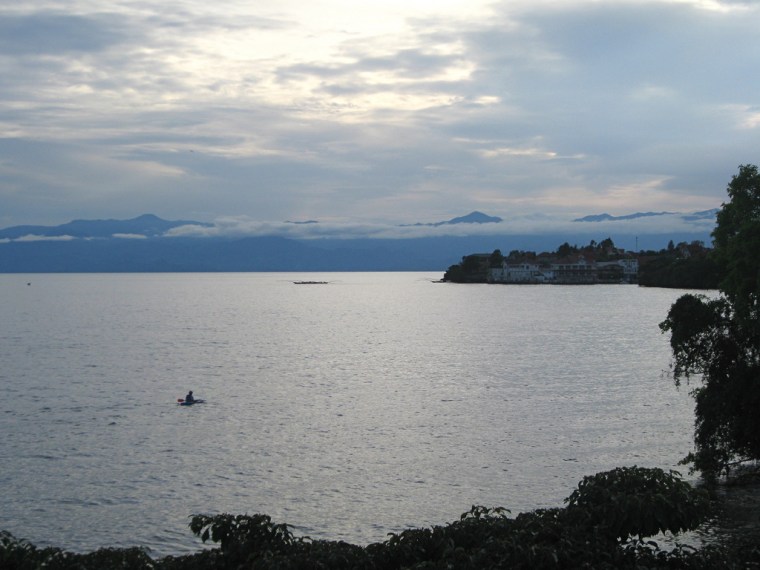Rwanda is centering its new energy plan on an unlikely, potentially dangerous source: Lake Kivu.
At first glance, the lake's placid blue waters appear harmless enough (shown to the right). But beneath its beautiful exterior lie huge reservoirs of methane and carbon dioxide that, if released onto the surface, would endanger the two million people living around its shores.
Kivu is one of the three known "erupting" lakes in the world. Only a stone's throw away from Nyurangongo volcano, the lake has thousands of years worth of dissolved volcanic gases trapped in its waters.
It's a ticking time bomb, but one with a silver lining. Rwanda's government recently built the Kibuye power plant along the lake's shore, which siphons off the noxious gases and uses the methane as fuel for three large generators.
Currently, the plant produces 3.6 megawatts of electricity, enough to power more than 4 percent of the country. The government hopes that within two years, the plant will be covering a third of the country's needs.
The end goal is for Kivu, a lake that has long been a source of fear for the surrounding residents, to be the country's primary source of power.
"Our grandfathers knew that there was gas in this lake, but now we have proved that it can be exploited. It's a cheap, clean resource that could last us up to 100 years," Alexis Kabuto, head engineer of the Kibuye project, told .
So far, the pilot program has run smoothly. But people are still worried about the lake overturning, especially if regional temperatures keep rising.
Kivu is completely stratified, meaning there is no mixing between the lake's warm, upper layer and the deep, colder layer. When gases enter the lake, they dissolve and migrate down to the denser, deep layer. The temperature and density differences act as a cap, preventing the gases from escaping back up to the surface.
But warming air temperatures could disrupt the cap by reducing the temperature difference between the two layers. The effect would be like opening a soda bottle; all those dissolved gases would fizz up to the surface in one big rush.
It's happened before, with dire consequences. On August 15, 1984, Cameroon's Lake Nyos erupted. The overturning unleashed a huge white cloud of highly-concentrated carbon dioxide onto the surrounding countryside. Hundreds of people and animals instantly suffocated.
What happened in Nyos is nothing compared to what could happen in Kivu, a much larger lake with more people living around it.
To prevent another eruption at Nyos, the Cameroon government built pipes that provide an outlet to regularly release gases from the deep. This prevents the gases from building up to toxic levels.
Rwanda's power plant is a win-win. It essentially plays the same mitigating role as Nyos' pipe system, and the planned expansion could have the added bonus of providing the lake's residents with a huge source of power from relatively clean-burning natural gas.
